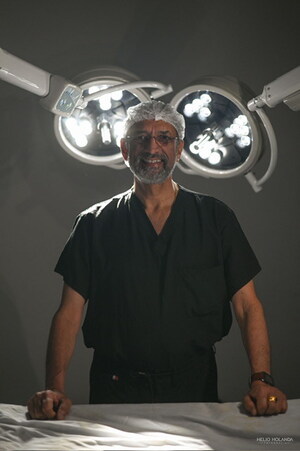TAMPA, Fla., March 15, 2021 /PRNewswire/ -- In the wave of innovative medical technology, PainTEQ, in partnership with Evolve Restorative Center in Santa Rosa, California and Celeri Health in Wilmington, Delaware, quickly nears enrollment completion of their single-arm multicenter prospective study exploring SI joint fusion using PainTEQ's posterior approach.
Enrollment continues for patients who have been treated for SI joint dysfunction using the LinQ™ Sacroiliac Joint Fusion System, a potential new standard of care for patients who have not responded to conservative SI joint treatments. PainTEQ's LinQ is a minimally-invasive treatment for patients with chronic SI joint pain, making it a more attractive option than traditional surgeries.
"The SECURE study, and its near completion, will forge the path for a posterior fusion approach to sacroiliac joint disease treatment. I look forward to analyzing the data once enrollment and follow-up is completed," said Jason Pope M.D, Founder and CEO Evolve Restorative Center, Santa Rosa California and Co-Principal Investigator, SECURE Trial.
Since June 2020, nine centers have been actively enrolling patients for the Single-arm, Multicenter, Prospective, Clinical Study on a Novel Minimally Invasive Posterior Sacroiliac Fusion Device (SECURE) Study. Now, only 8 months later, enrollment is almost complete.
"I am pleased to see the strong enrollment rate in this landmark study that will validate the LinQ procedure as the most effective and least invasive approach for patients suffering from sacroiliac dysfunction. As the sacroiliac fusion market continues to become more crowded, it will be critical for physicians and patients to seek sacroiliac fusion devices that are backed by high level, prospective evidence," said Dawood Sayed M.D. Chief of Pain medicine, The University Kansas Medical Center and Co-Principal Investigator, SECURE Trial.
Enrollment for the SECURE Study reaches completion at a relatively fast pace, making this an exciting time in the medical technology space. With roughly 11% of clinical trials failing to enroll a single patient, according to research from Tufts, PainTEQ's ability to quickly spark interest in their trial is an indication of patient and physician trust.
"Our whole team is thrilled to have this much traction as fast as we have," said Sean LaNeve, PainTEQ CEO. "We have no doubts that once completed, the data from this study will be able to help thousands of physicians treat millions of patients suffering from SI joint pain more effectively, providing better outcomes."
It is estimated that the SI joint is the source of pain for up to 30% of patients with chronic lower back pain. SI joint dysfunction has been treated the same way for years, creating a gap in treatment. LinQ addresses this gap and offers an ultra-minimally invasive solution to patients suffering from sacro-iliac dysfunction and pain.
About PainTEQ: Built to bring interventional procedures to the market, PainTEQ is a medical device innovator headquartered in Tampa, Florida. Working with pain management specialists to safely reduce and eliminate SI joint dysfunction, PainTEQ's LinQ therapy is immediately providing clinical benefits to individuals living with incapacitating lower back pain through a minimally invasive, outpatient procedure. Learn more about PainTEQ's novel solution to SI joint pain at painteq.com.
About LinQ: The LinQ SI Joint Stabilization System provides SI joint dysfunction patients with a safe, minimally invasive solution to combat pain. After a thorough diagnostic process, physicians can help alleviate, and in many cases eliminate, chronic pain by placing a single LinQ allograft into the SI Joint. This single implant helps patients immediately regain joint stability – and with its large graft window, the LinQ SI Joint Stabilization System helps create an ideal environment for long-term fusion. Learn more at PainTEQ.com.
SOURCE PainTEQ

Related Links
WANT YOUR COMPANY'S NEWS FEATURED ON PRNEWSWIRE.COM?
Newsrooms &
Influencers
Digital Media
Outlets
Journalists
Opted In






Share this article